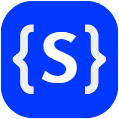Transparency and Knowledge Sharing Across Departments
Knowledge is the most valuable resource in an organization, but frequently remains contained in siloed departments. Duplicate work occurs among teams, leaders make decisions based on partial information, and employees can waste hours trying to find the right information, only to discover that the knowledge exists somewhere else.
These inefficiencies increase as the business grows, therefore creating real barriers to execution, as well as confidence and trust. With a unified work platform, knowledge is transparent, accessible, and connected across departments. That’s why the best project management tools today are focused not just on task execution, but as part of collaboration in sharing knowledge.
Creating Dynamic Knowledge Hubs

Documents are usually where companies keep important stuff like plans and ideas. But if these files just sit there, info gets lost. Lark Docs changes documents into places where teams can work together. People can work on the same doc at the same time, so everything’s up-to-date.
You can see how the doc changed over time, and comments stay right where they belong. You can also add things like spreadsheets, task lists, and approval links. This makes documents more than just files—they actually help people share what they know. Now, info becomes something everyone can use, no matter what department they’re in.
Building Shared Organizational Memory
If Docs capture ongoing knowledge, Lark Wiki turns that knowledge into a structured and permanent resource. Wiki pages serve as a single source of truth for policies, playbooks, and reference material that employees across departments rely on daily. Structured hierarchies ensure information is logically organized, while search functions help employees quickly find answers without needing to ask around.
Wikis are always current, because updates can be made instantly and visible to all. This builds a culture of openness, where knowledge is documented, accessible, and preserved as part of organizational memory, ensuring transparency scales alongside growth.
Sharing Data as Collective Knowledge

Data isn’t just words; numbers matter too! Think budgets, forecasts, performance scores, and surveys – they’re all key to a company’s knowledge. Lark Sheets gets this data out of boring spreadsheets and turns it into something everyone can share and work with together. Different teams can update Sheets as things change, so money stuff, reports, or dashboards are always up-to-date for those who need them.
The way Sheets is set up shows potential problems like spending too much or missing goals, so everyone sees issues before they become big problems. Plus, you can stick Sheets into Docs, Wiki, or Base, so the data is always right where you need it. This way, info isn’t just seen but can be used by all teams to get stuff done.
Linking Knowledge with Execution

Knowledge doesn’t deliver value unless it translates into execution. Lark Base makes this connection by turning knowledge into structured records of projects, milestones, and ownership. For example, customer insights recorded in Docs, Wiki, or Sheets can be captured in Base as part of project databases.
Teams can then view dashboards that track how knowledge-informed initiatives are progressing, while dependencies show where delays may impact outcomes. Automations ensure updates are surfaced in real time, keeping knowledge actionable. By aligning customer and project data together, Base reinforces Lark as a connected CRM app, ensuring transparency benefits both collaboration and customer outcomes.
Making Communication Part of Knowledge Sharing
Transparency also relies on communication management. Lark Messenger makes sure important updates, files, and conversations aren’t lost among distracting chat streams. With threaded discussions, communication is organized by issue, and pinned messages flag the most critical decision or update. Files and links shared in Messenger remain in context, eliminating duplication and contributing to ensuring that knowledge flows with any conversation.
Messenger can also link to Docs, Wiki, and Base, so discussions can appropriately flow into easy-to-access knowledge repositories. This does mean a department is not simply talking, but building a shared organizational sense.
Documenting Decisions Across Teams
Approvals are often hidden knowledge—decisions get made but are hard to trace later. Lark Approval eliminates this problem by making decision-making transparent and accountable. Customizable forms capture details upfront, routing rules direct requests to the right reviewers, and notifications surface them in Messenger where teams are already working.
Every approval is logged, providing a clear history of who decided what and when. Running through an automated workflow, approvals turn into part of the organization’s knowledge base, ensuring transparency in processes that are usually opaque.
Preserving Knowledge from Discussions
Meetings can be a goldmine of info, but a lot of it disappears after they’re done. Lark Minutes makes sure every chat helps everyone get on the same page. It auto-records everything said. Plus, it pulls out action items and turns them into tasks to follow up on. It figures out who said what, so everyone knows who’s responsible, and sharing clips makes it easy to pass around the important stuff.
So, by grabbing meeting info and spreading it around, Minutes helps valuable stuff from getting stuck in one team, which becomes part of what the whole company remembers.
Conclusion
Collaboration without transparency and knowledge sharing is not just a byproduct of collaboration; it is the only way to grow an organization while still remaining efficient. Lark creates the environment in which knowledge can be created, structured, recorded, communicated, and preserved.
Docs will capture your changing ideas, Wiki creates a permanent memory, Sheets can share live data, Base joins knowledge with execution, Messenger keeps the communication specific and tied to the subject being discussed, Approval captures the decisions related to action, and Minutes can ensure the meetings create shared understanding.
By allowing knowledge to flow through teams, organizations can reduce redundancy, speed up execution and create an environment which embraces openness enhances trust. Transparency is not a goal; it is built into the system.

